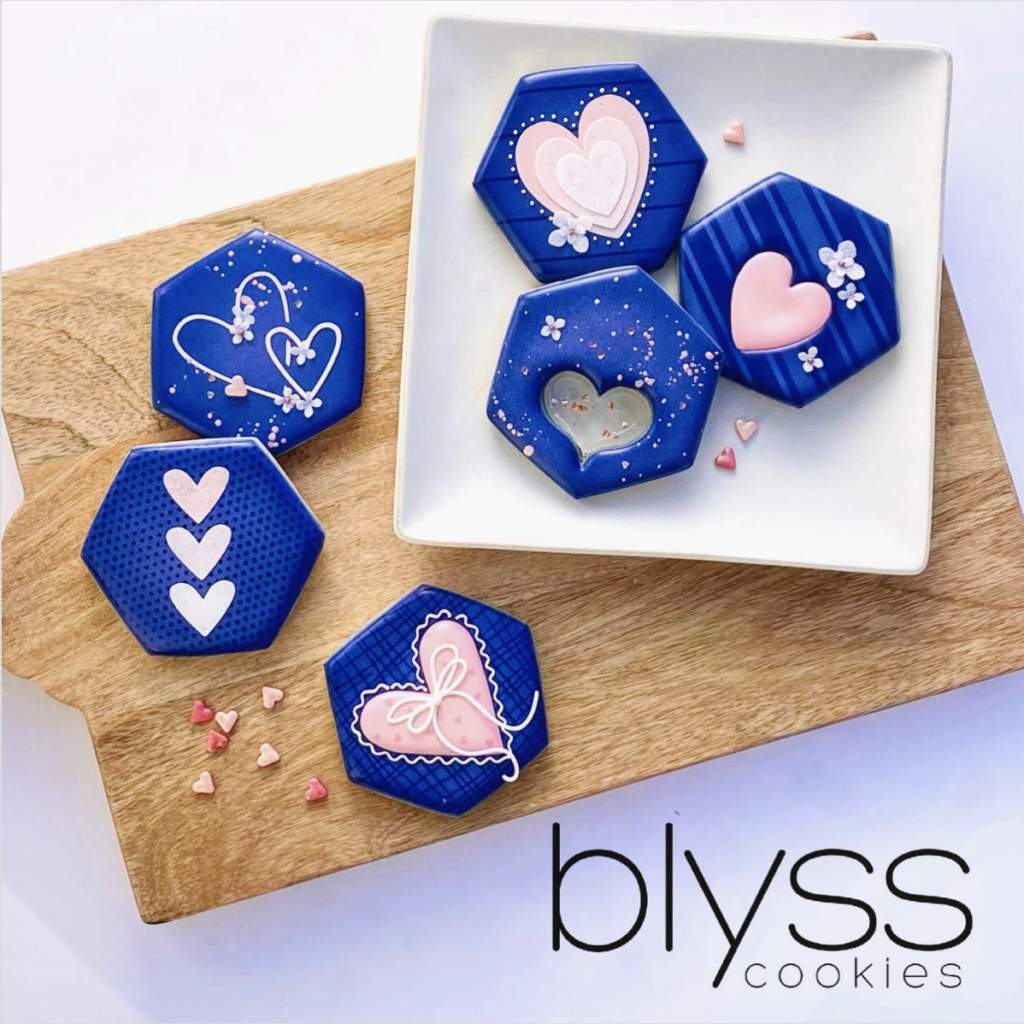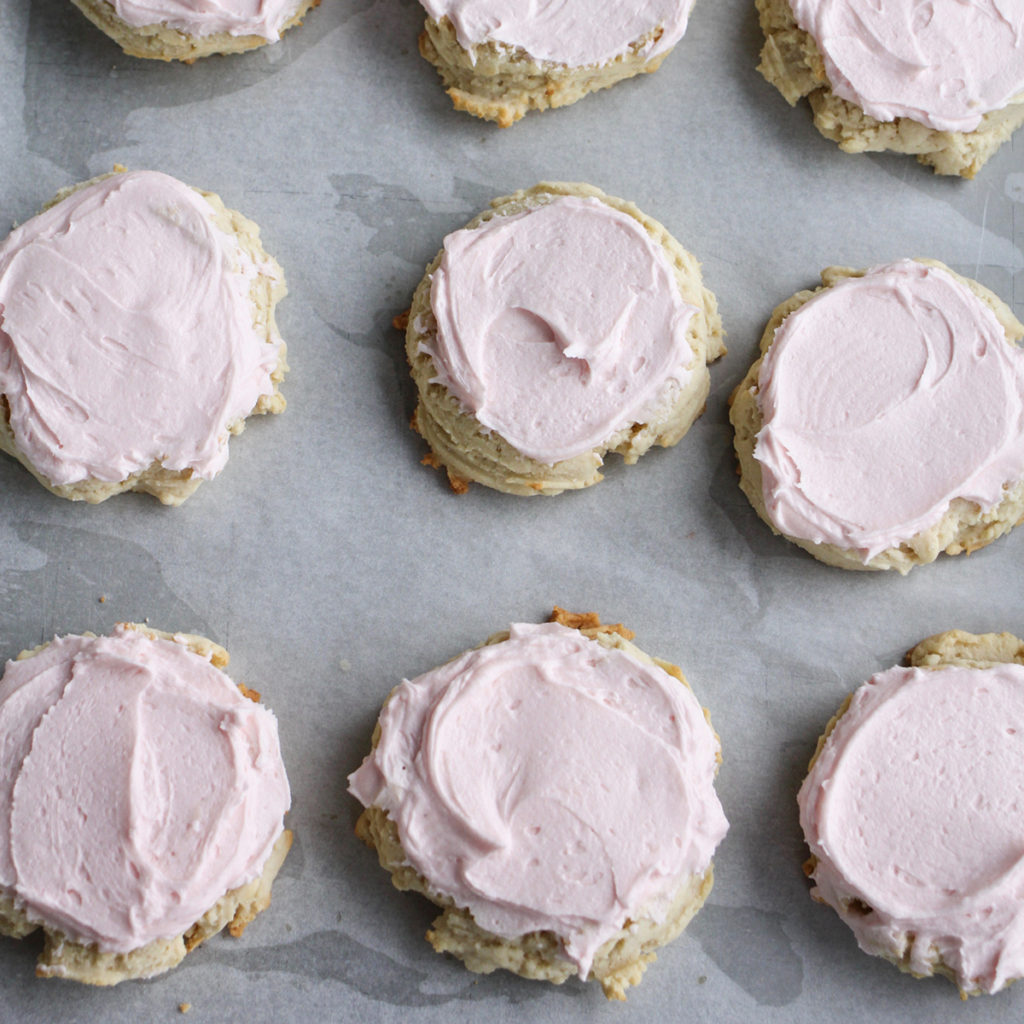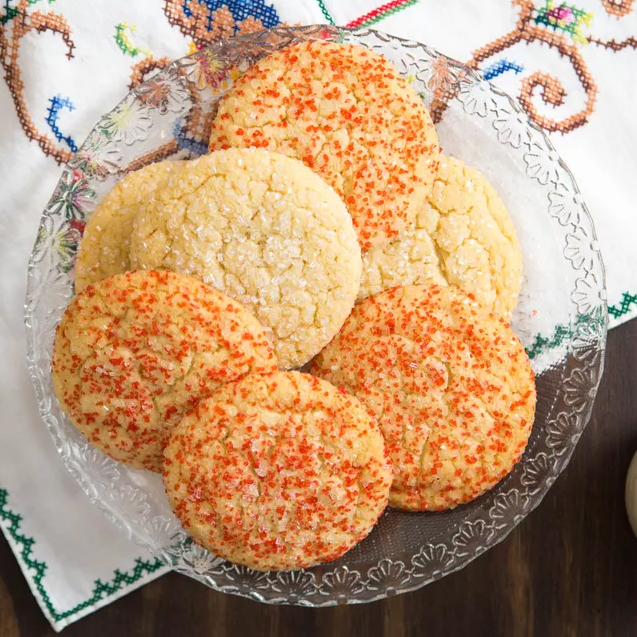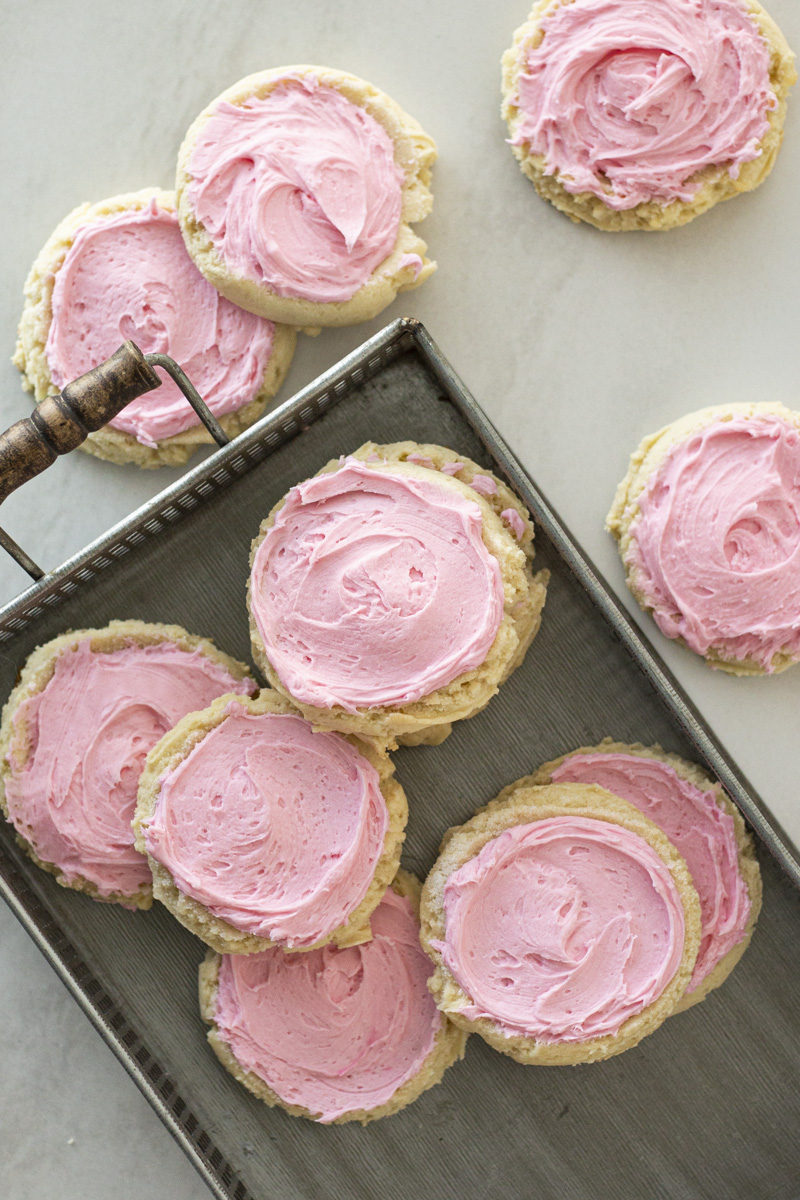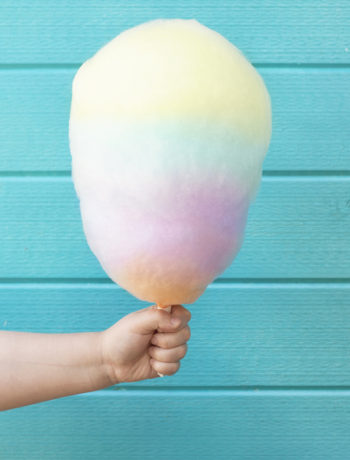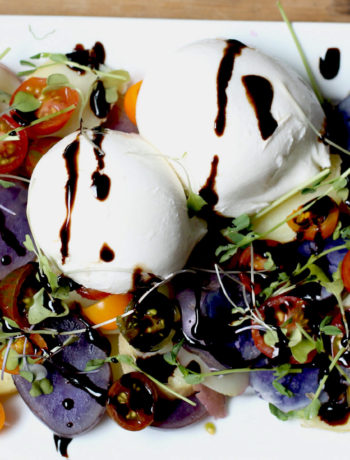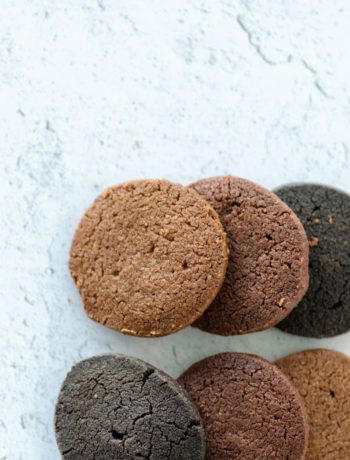Simple, slightly crisp, with the perfect amount of chew— yes, we are talking about sugar cookies! We decided to take a deep dive into this beloved treat to find out what makes the “perfect” sugar cookie. But wait… your mom made the best sugar cookies, and your friend said that their neighbor has the best recipe, and your spouse found a really good recipe online, so which one really is the best?
For most people, sugar cookies evoke memories. From making Valentine’s cookies with mom to the family Christmas cookie baking day. Because of that, the characteristics of what makes the perfect sugar cookie differ from person to person. Our goal with this guide is to set you up for sugar cookie success by giving you options. From there you get to pick and choose your ideal base and topping resulting in your perfect sugar cookie.
Adults and kids can both have a lot of fun with it, making it a great activity for all. It’s simple and neutral flavored so it allows you to be creative and make a custom result that appeals to your taste buds.
DOUGH
Sugar cookie dough is a great base. Sugar cookies can be dressed up with frosting and toppings, dipped in chocolate, or eaten plain. There are a lot of different styles and ways to prepare and serve these cookies. Some recipes require rolling and cutting while others are less time-consuming and use a cookie scoop. Most recipes include the standard ingredients: flour, butter, sugar, salt, baking powder, and flavoring. We noticed this overlap in recipes and wondered if the recipes could be interchanged with a different method (i.e. switching a roll and cut recipe’s dough out for a rolled in sugar and vice versa.) Before we go through our test results, let’s review different types of cookies and the importance of ingredients.
ROLLED IN SUGAR
A true classic. These cookies are simple to make and are great for “little helpers.” Roll the formed dough in sanding sugar, nonpareils, sprinkles, sanding sugar, or other toppings. Whatever you choose, this cookie is a fun and sweet treat.
SMASHED
Made popular by soda shops, smashed cookies are a sort of cross between the roll and cut, and rolled in sugar. To make them, first form a dough ball, then smash the cookie with the bottom of a glass or other flat object to create a flat surface perfect for spreading frosting. These cookies are no-fuss and delicious!
ROLL & CUT
This type of cookie is great for, you guessed it– rolling and cutting out shapes. Most doughs require chilling to get clean edges and avoid spreading. Some recipes will make a crunchy cookie, while others yield a soft dough that still has enough structure to hold frostings and decorations. These cookies are commonly decorated with royal icing or topped with frosting, sprinkles, and/or candies.
INGREDIENTS
Many sugar cookie recipes have similar ingredients, but what exactly does each ingredient do? Let’s go over the most common (and some not-so-common) ingredients found in sugar cookies. It’s important to note that each recipe is designed with a specific end product in mind. Altering ingredient combinations and ratios will change the cookie’s final texture and flavor.
FLOUR
The ratio of flour to other ingredients in a cookie recipe is what creates the final texture. When a cookie contains a lot of flour and little moisture, it has a delicate, crumbly texture (like shortbread.) A cookie with more moisture and less flour has a chewier, almost cakier texture. Recipes usually specify what type of flour to use. There are many types of flours including, all-purpose, cake, and bread. Flours cannot be interchanged. Doing so will alter the cookie’s texture.
It’s important to measure flour correctly. If using measuring cups, fluff the flour in the container and then spoon flour into the measuring cup. Once the cup is filled, level it off using the flat edge of a butter knife. If flour is measured incorrectly, the dough may be too wet or dry. This can alter the final texture of the cookie.
SUGAR
The star of the show! Sugar is absolutely essential for sugar cookies. It is your sweetener and adds color to your cookies by caramelizing. Sugar creates a crispy edge thanks to its handy ability to absorb the wet dough ingredients. Some cookie recipes call for brown sugar. Brown sugar contains molasses which results in a more moist cookie with a hardier chew.
Rolled-in sugar cookies can be rolled in regular granulated sugar, sanding sugar, or crystal sugar. The biggest difference between these sugars is the size of granules, with granulated sugar being the smallest in size, and crystal being the largest. Sanding and crystal sugars are sparkly in appearance. They are available in many colors if you want to add a little fun pop to your bakes.
EGGS
Eggs serve as an emulsifier in cookie recipes. They bring and hold everything together while adding structure and stability. Eggs shorten gluten strands and add moisture and protein, which results in a soft and chewy texture. They also help leaven the dough and create a beautiful golden color. Without eggs, a cookie would be dry, dense, and crumbly.
Oftentimes, recipes will say to add eggs in one at a time. This is because of the egg yolk. The egg yolk is the part of the egg that acts as a natural emulsifier. When combined with butter, it helps smooth out the dough and makes it creamy. Adding one at a time will help your egg combine with the butter instead of combining with the other eggs. Some recipes will ask for all room temperature ingredients while others may ask for a cold egg. This is to help the cookie hold its shape so it won’t spread as much while baking in the oven.
If you want to change the texture of your cookies, play with the ratios. Start with the eggs. If your ratio of sugar to flour and eggs is high, the cookie will collapse and create a denser, chewier cookie. If you add even more sugar, the cookies will be thin and crispy. To make the cookies more cake-like, add less sugar or increase the amount of flour and eggs. The fun thing about cookies is that they are easy to customize and play with ingredient ratios.
SALT
Salt not only enhances the flavors of your other ingredients but also strengthens the proteins in the flour for a chewier cookie. There are many variations of salt, but they all contain the same ingredient– sodium. Salts can be substituted for one another, but we recommend sticking with the salt called for in a recipe. If a recipe calls for Kosher salt and you only have table salt on hand, don’t use the same amount. Kosher salt has a coarse grain and its large flakes take up much more volume compared to table salt. If you find yourself in this scenario, use half the amount of salt called for (or if measuring by weight, use the same amount.) Salt will help your cookie’s other flavors shine and create a balance between them and the sugar in the recipe. To put it simply, your cookie will not be the same without a little bit of salt in it.
BUTTER
Butter. Who doesn’t love butter? It adds flavor, softness, moisture, and richness that cannot be replicated. Not only does butter play a major role in flavoring a cookie, but it is also considered a leavening agent and can affect the structure and stability of your dough. Because of butter’s low melting point, it can help cookies spread while baking as opposed to other fat sources.
There are many varieties of this delicious ingredient. Some kinds of butter, like European butter, have a higher fat content while American butter has slightly more water. Most recipes will specify whether to use salted or unsalted butter. For best results, it is important to use what your recipe calls for. While it is theoretically fine to use salted butter in place of unsalted butter, your final cookie may taste saltier than expected. To offset this, you can adjust the amount of added salt in your dough.
It is also important to use the right temperature of butter. The temperature of ingredients can play a big role in how a cookie will react in the oven. If melted butter is used in place of softened or cold butter, the texture will be off and the cookies will spread more. Be sure your butter is the right consistency so your cookies will turn out perfect!
BAKING POWDER
Baking powder gives cookies a soft, light, and cakey texture. Its chemical reaction when moistened and baked creates carbon dioxide which aerates the dough. It is not interchangeable with baking soda. Baking soda contains pure sodium bicarbonate while baking powder has an acid (cream of tartar) added to it, so all it needs is heat and moisture to create a reaction. Using baking soda in place of baking powder can result in a dense, crunchy, and crumbly cookie instead. Baking powder can lose its lifting power over time. We recommend switching out your baking powder every six months to be sure your baked goods are getting the rise and aeration you expect.
FLAVORING
This is where you can personalize your perfect cookie! While vanilla extract is the most common option in recipes, don’t be afraid to play with natural spices or use a baker emulsion.
A lot of times the base flavor of a sugar cookie is overlooked which causes some people to think sugar cookies are plain or flavorless. While vanilla is typically used the most, adding an almond emulsion or some natural spices, like nutmeg, can help the sugar cookie base stand out more. If you’re not a fan of vanilla, try a butter emulsion or lemon extract in place of it (or heck! Why not both?) While making cookies, you’re in the driver’s seat and you ultimately control the flavors. There are several options for flavoring cookies. Emulsions, extracts, and spices are used to tweak flavors, but with so many options it can feel overwhelming. Below is a mini-guide to flavors and how they can be used.
EMULSIONS
What has long been a secret ingredient used by professionals, emulsions are now gaining in popularity. A bakery emulsion is flavoring where the flavor is suspended in water. Bakers prefer this to alcohol-based extracts because the flavor is not altered by the taste of the alcohol. The flavors don’t “bake out” like alcohol-based flavorings resulting in a final product that is more robust in flavor.
Switching to emulsions is easy. The conversion ratio is 1:1 for baking, meaning that every teaspoon of extract your recipe calls for can be replaced by 1 teaspoon of emulsion. Emulsions can be used in all your baked goods and confections like frostings, fondants, macarons, etc. If using an emulsion in icing, start with half of the recommended flavoring amount to start and then add more to taste. Emulsions are generally stronger than an extract. The only applications that are not recommended with emulsions are chocolate and hard candy making.
EXTRACTS
Extracts are probably the flavoring that you’re most familiar with. They are made by extracting the flavor from a plant by using alcohol. The alcohol is a necessary ingredient when making an extract, but just know that some of the alcohol (meaning some of the flavor) will evaporate when baked. This can result in a more subtle flavor than you may have expected in your baked goods. Vanilla extract is commonly used in a lot of American baked goods and it is included in most sugar cookie recipes. Vanilla extract is a fantastic flavoring, but there are so many other extracts like almond, lemon, anise, and more. Try combining extracts or an extract and an emulsion to bring out complementary flavors.
FLAVORING OILS
Want a really flavorful cookie that packs a punch? Try a flavoring oil! Flavoring oils are generally four times stronger than extracts. They are oil-based and very concentrated meaning that the flavor and aroma will stand out more in your baked goods. Flavor oils can withstand higher temperatures and less flavor will be baked out compared to extracts. Start out using a few drops of oil in place of an emulsion or extract. Oils are extremely concentrated, so a little goes a long way.
**Please be careful and look at your labels when purchasing a flavor oil, emulsion, or extract. Some products may be advertised as a flavor oil but are actually alcohol-based. This will result in a difference in flavor and can alter the consistency of whatever you are making (especially royal icing and chocolate.)
NATURAL SPICES
A spice is a part of a plant that is used for the flavoring or coloring of food. Not to be confused with herbs, spices are mainly seeds, fruit, roots, and barks. Spices come in several forms: fresh, whole dried, or pre-ground dried. Some of the most common spices found in baking include cinnamon, nutmeg, cloves, and ground ginger. When adding spices, it’s always a good idea to start with a small amount. There is no exact conversion ratio for spices and extracts/emulsions. This is where we lovingly suggest that you “measure with your heart.” Who knows? You might have just created an amazing cookie flavor that becomes your new favorite!
OUR FAVORITE SUGAR COOKIE RECIPES
